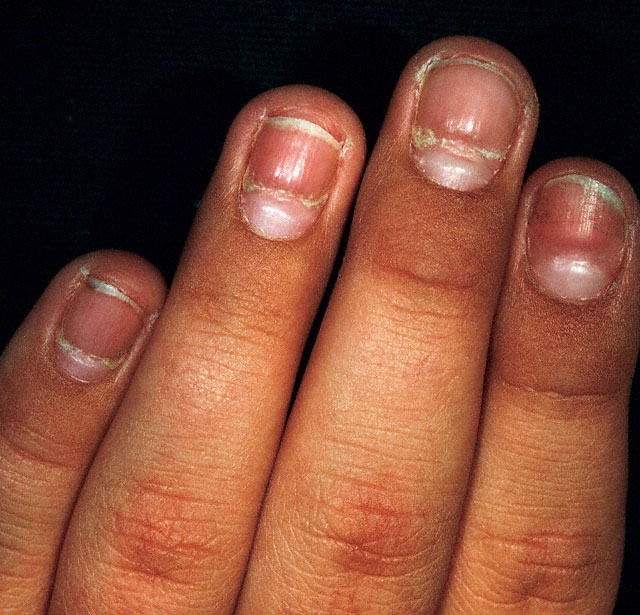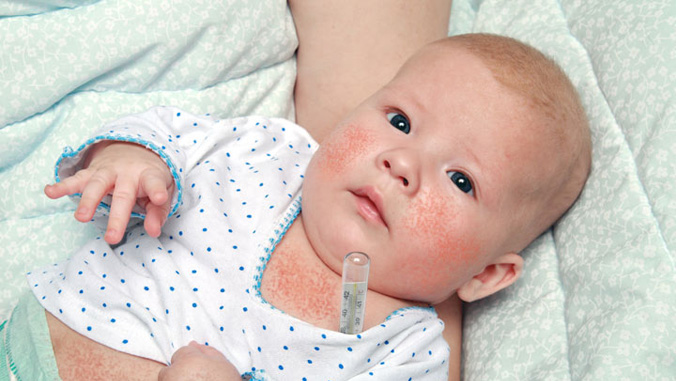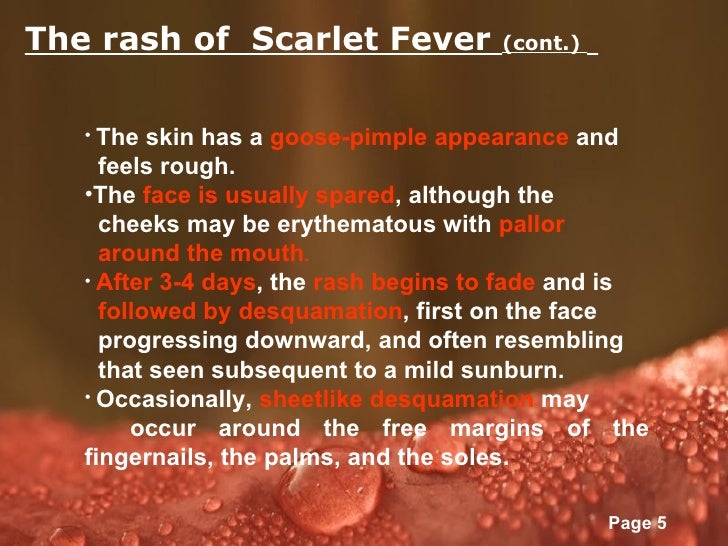Medi Services

Scarlet fever is a bacterial illness that develops in some people who have strep throat. Also known as scarlatina, scarlet fever features a bright red rash that covers most of the body. Scarlet fever is almost always accompanied by a sore throat and a high fever.
Scarlet fever is most common in children 5 to 15 years of age. Although scarlet fever was once considered a serious childhood illness, antibiotic treatments have made it less threatening. Still, if left untreated, scarlet fever can result in more-serious conditions that affect the heart, kidneys and other parts of the body.The rash and the redness in the face and tongue usually last about a week. After these signs and symptoms have subsided, the skin affected by the rash often peels. Other signs and symptoms associated with scarlet fever include:
Scarlet fever is caused by the same type of bacteria that cause strep throat. In scarlet fever, the bacteria release a toxin that produces the rash and red tongue.
The infection spreads from person to person via droplets expelled when an infected person coughs or sneezes. The incubation period — the time between exposure and illness — is usually two to four days.
Scarlet fever can occur as a result of a group A Streptococcus (group A strep) infection.[1]The signs and symptoms include a sore throat, fever, headaches, swollen lymph nodes, and a characteristic rash. The rash is red and feels like sandpaper and the tongue may be red and bumpy. It most commonly affects children between five and fifteen years of age.[1]
Scarlet fever affects a small number of people who have either strep throat or streptococcal skin infections. The bacteria are usually spread by people coughing or sneezing. It can also be spread when a person touches an object that has the bacteria on it and then touches their mouth or nose.[1] The characteristic rash is due to the erythrogenic toxin, a substance produced by some types of the bacterium.[1][3] The diagnosis is typically confirmed by culturingthe throat.[1]
There is no vaccine. Prevention is by frequent handwashing, not sharing personal items, and staying away from other people when sick. The disease is treatable with antibiotics which prevents most complications.[1] Outcomes with scarlet fever are typically good.[4] Long-term complications as a result of scarlet fever include: kidney disease, rheumatic heart disease, and arthritis.
Scarlet fever is characterized by:
The rash is the most striking sign of scarlet fever. It usually appears first on the neck and face (often leaving a clear, unaffected area around the mouth). It looks like a bad sunburn with tiny bumps, and it may itch. It then spreads to the chest and back and finally to the rest of the body. In the body creases, especially around the underarms and elbows, the rash forms the classic red streaks known as Pastia's lines. On very dark skin, the streaks may appear darker than the rest of the skin. Areas of rash usually turn white (or paler brown, with dark complexioned skin) when pressed on. By the sixth day of the infection, the rash usually fades, but the affected skin may begin to peel.
Usually, other symptoms help to confirm a diagnosis of scarlet fever, including a reddened and sore throat, a fever at or above 38 °C (100.4 °F), and swollen glands in the neck. Scarlet fever can also occur with a low fever. The tonsils and back of the throat may have a whitish coating, or appear red, swollen, and dotted with whitish or yellowish specks of pus. Early in the infection, the tongue may have a whitish or yellowish coating. Also, an infected person may have chills, body aches, nausea, vomiting, and loss of appetite.
In rare cases, scarlet fever may develop from a streptococcal skin infection like impetigo. In these cases, the person may not develop soreness of the throat.
When scarlet fever occurs because of a throat infection, the fever typically subsides within 3 to 5 days, and the sore throat passes soon afterward. The scarlet-fever rash usually fades on the sixth day after sore-throat symptoms started, and begins to peel (as described above). The infection itself is usually cured with a 10-day course of antibiotics, but it may take a few weeks for tonsils and swollen glands to return to normal.





The signs and symptoms that give scarlet fever its name include:
Talk to your doctor if your child has a sore throat with: